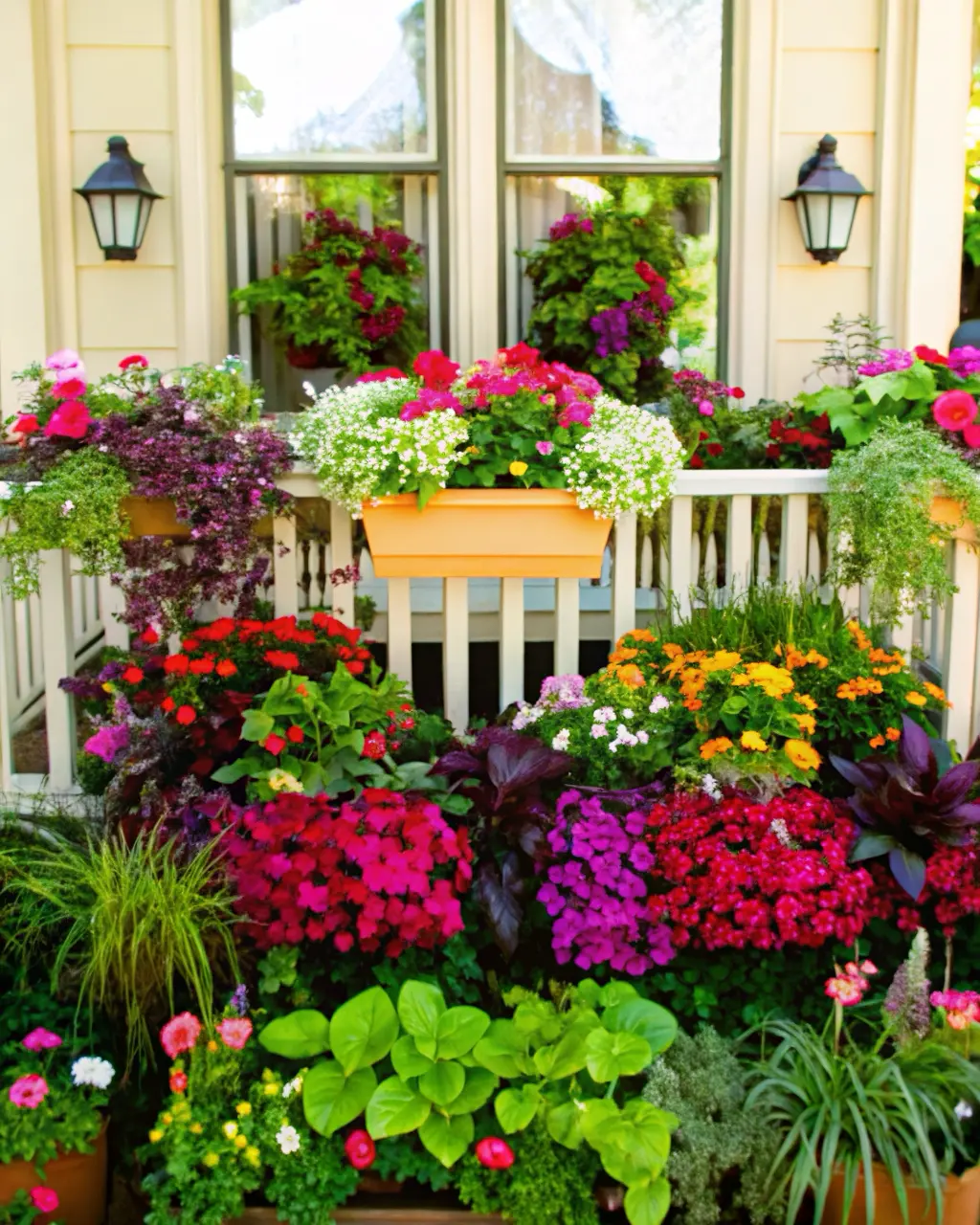Year-round container plants offer urban and suburban gardeners unlimited opportunities to create stunning displays on patios, balconies, and other small spaces. The art of container gardening has evolved significantly, with modern approaches focusing on selecting balcony plants for all seasons that provide continuous interest regardless of space limitations. This approach to patio landscaping allows gardeners to enjoy beautiful, productive gardens even without traditional yard space.
Table of Contents
Maximizing Small Space Gardening Potential
The beauty of container gardening lies in its flexibility and control. Unlike in-ground planting, containers allow gardeners to modify growing conditions, move plants for optimal placement, and create concentrated displays that maximize visual impact in limited space. This control makes it possible to grow plants that might not survive in local soil conditions while creating displays that rival traditional gardens.
Modern container gardening embraces the concept of four-season interest, selecting plants that provide value throughout the year rather than focusing on single-season displays. This approach creates more sophisticated, sustainable container gardens that justify the investment in quality plants and containers while providing continuous enjoyment for garden enthusiasts.
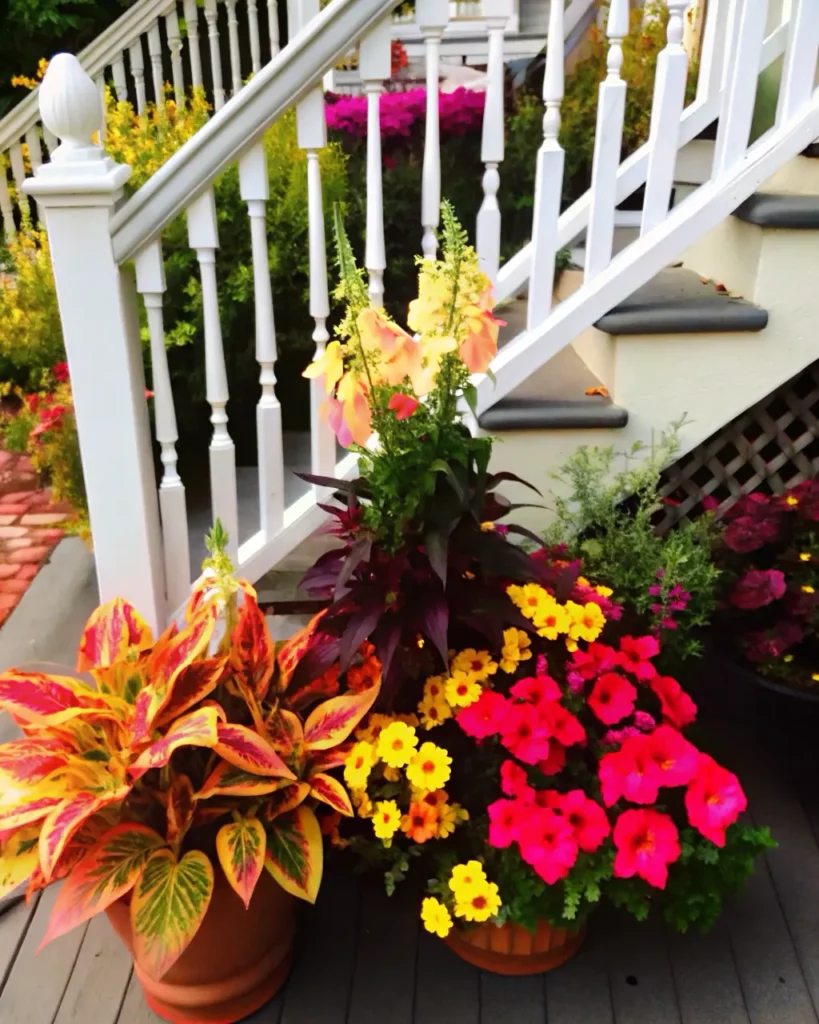
Benefits of Container Gardening for Small Spaces
Container gardening offers unique advantages that make it ideal for modern living situations. The mobility of containers allows gardeners to optimize growing conditions by moving plants to follow sunlight patterns, escape harsh weather, or create different seasonal arrangements. This flexibility is particularly valuable for balcony gardening, where space and exposure limitations require creative solutions.
Space efficiency represents another major advantage of container gardening. Vertical growing techniques, tiered arrangements, and strategic plant selection allow gardeners to maximize growing space in surprisingly small areas. A well-designed balcony garden can provide the same satisfaction and productivity as a much larger traditional garden.
Control over growing conditions makes container gardening ideal for challenging situations. Gardeners can provide perfect soil conditions, optimal drainage, and appropriate nutrition for each plant regardless of local soil quality or climate limitations. This control often results in better plant performance than would be possible in natural garden conditions.
The immediate impact of container gardens provides instant gratification for gardeners who don’t want to wait years for landscape plants to mature. Container arrangements can be designed to provide immediate visual impact while allowing for easy modifications as plants grow or seasonal needs change.
Key Features to Look for in Year-Round Container Plants
Selecting plants for year-round container displays requires understanding characteristics that provide extended value beyond single-season interest. Multi-season plants offer the best value for container gardening investments, providing beauty and interest throughout multiple seasons rather than brief peak periods.
Foliage quality becomes particularly important in year-round container plants, as attractive leaves provide consistent interest even when flowers are not present. Plants with interesting leaf shapes, colors, or textures maintain visual appeal throughout the growing season and often into winter months.
Flowering duration and succession determine how long plants provide color and interest in container displays. Plants that bloom continuously or produce multiple flowering periods provide better value than those with brief, single-season displays. Some plants offer both attractive foliage and extended flowering, making them ideal for year-round containers.
Structural integrity helps plants maintain attractive appearance throughout the growing season and into winter months. Plants that maintain good form without becoming leggy or ragged provide consistent visual appeal and require less maintenance to keep containers looking their best.
Climate adaptability allows plants to perform well in the challenging conditions often found in container culture. Container plants face more extreme temperature fluctuations, wind exposure, and moisture stress than ground-planted specimens, so choosing adaptable species improves success rates significantly.
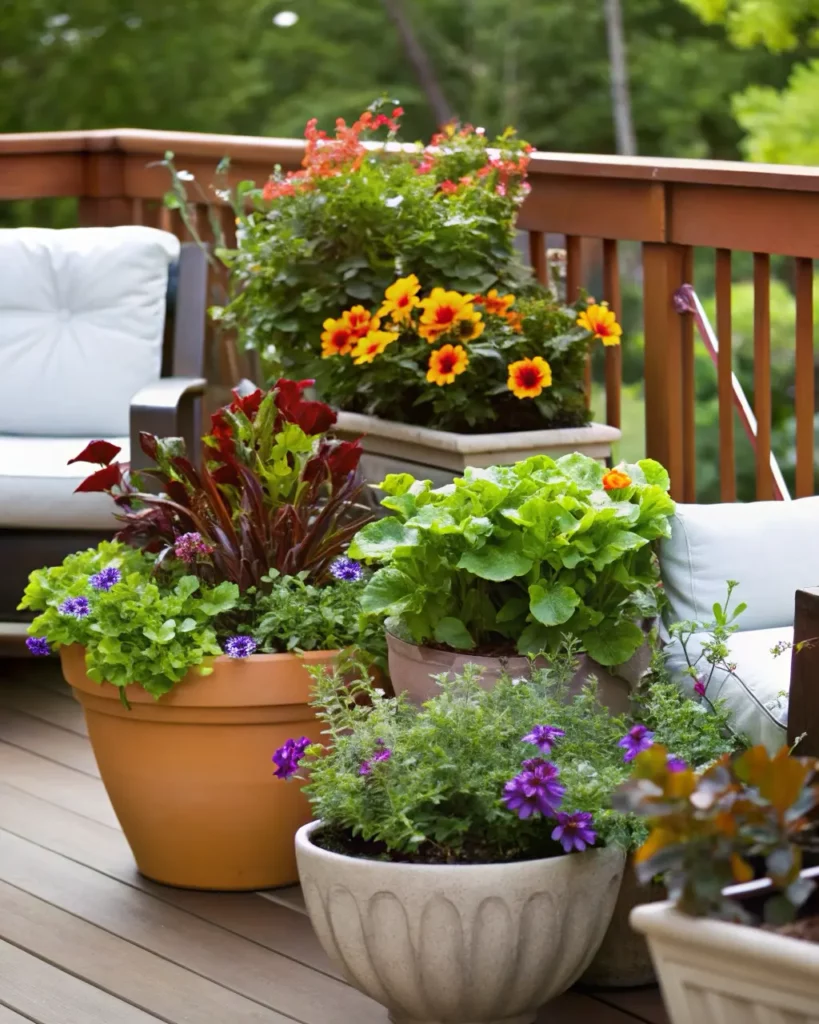
Top Year-Round Container Plant Selections
Million Bells (Calibrachoa species) excel as year-round container plants due to their continuous flowering habit and compact, trailing growth pattern. These plants produce small, petunia-like flowers in numerous colors from spring through fall frost, providing consistent color in container displays. The fine-textured foliage remains attractive even without flowers, while the trailing habit makes Million Bells excellent for hanging baskets and edge plantings in mixed containers. They tolerate heat, humidity, and occasional drought while requiring minimal maintenance beyond regular watering and occasional fertilizing.
Angelonia (Angelonia angustifolia) provides reliable summer-long blooming with spikes of small, snapdragon-like flowers in purple, pink, white, or blue. This heat-tolerant annual maintains excellent form throughout hot summer weather when many other plants struggle, making it invaluable for container displays in challenging climates. The upright growth habit and continuous flowering make Angelonia excellent for providing height and color in mixed container arrangements. The plant requires minimal deadheading and tolerates both heat and humidity exceptionally well.
Sweet Alyssum (Lobularia maritima) offers delicate beauty and practical benefits as a year-round container plant. This low-growing annual produces masses of tiny, fragrant flowers in white, pink, or purple from spring through fall. The honey-like fragrance attracts beneficial insects while providing sensory appeal for container gardens. Sweet Alyssum tolerates cool weather better than many annuals, often continuing to bloom into early winter in mild climates. The plant works well as groundcover in mixed containers or as standalone displays in small pots.
Verbena (Verbena bonariensis and V. rigida) provides vertical interest and long-lasting color in container displays. Tall verbena species like V. bonariensis produce airy, purple flower clusters on tall stems that provide height without bulk in container arrangements. The flowers attract butterflies and beneficial insects while providing color from summer through fall. Compact verbena varieties offer similar benefits in smaller packages suitable for limited space containers.
Coleus (Plectranthus scutellarioides) contributes outstanding foliage color and texture to year-round container displays. Modern coleus varieties offer incredible diversity in leaf colors, patterns, and shapes, providing consistent visual interest throughout the growing season. The plants tolerate both sun and shade conditions, making them versatile for various container locations. Coleus maintains attractive foliage from spring through fall, with some varieties surviving light frost to extend the display season.
Container Selection and Preparation
Choosing appropriate containers significantly impacts plant performance and display longevity. Size considerations must account for root space requirements, water-holding capacity, and visual proportions relative to plant size and growing habits. Larger containers provide more stable growing conditions and require less frequent watering, making them preferable for year-round displays.
Drainage requirements are crucial for container plant success, as waterlogged conditions cause more plant failures than drought stress. Containers must have adequate drainage holes, and additional drainage material in the bottom of deep containers can prevent water accumulation around roots.
Material selection affects both aesthetics and plant performance. Terra cotta containers provide excellent drainage and root aeration but dry out quickly in hot weather. Plastic containers retain moisture better but may not provide adequate aeration for some plants. Glazed ceramic and composite materials offer compromises between appearance and function.
Weight considerations become important for balcony and elevated installations, where structural limitations may restrict container size and materials. Lightweight alternatives like fiberglass or resin containers allow for larger displays without excessive weight concerns.
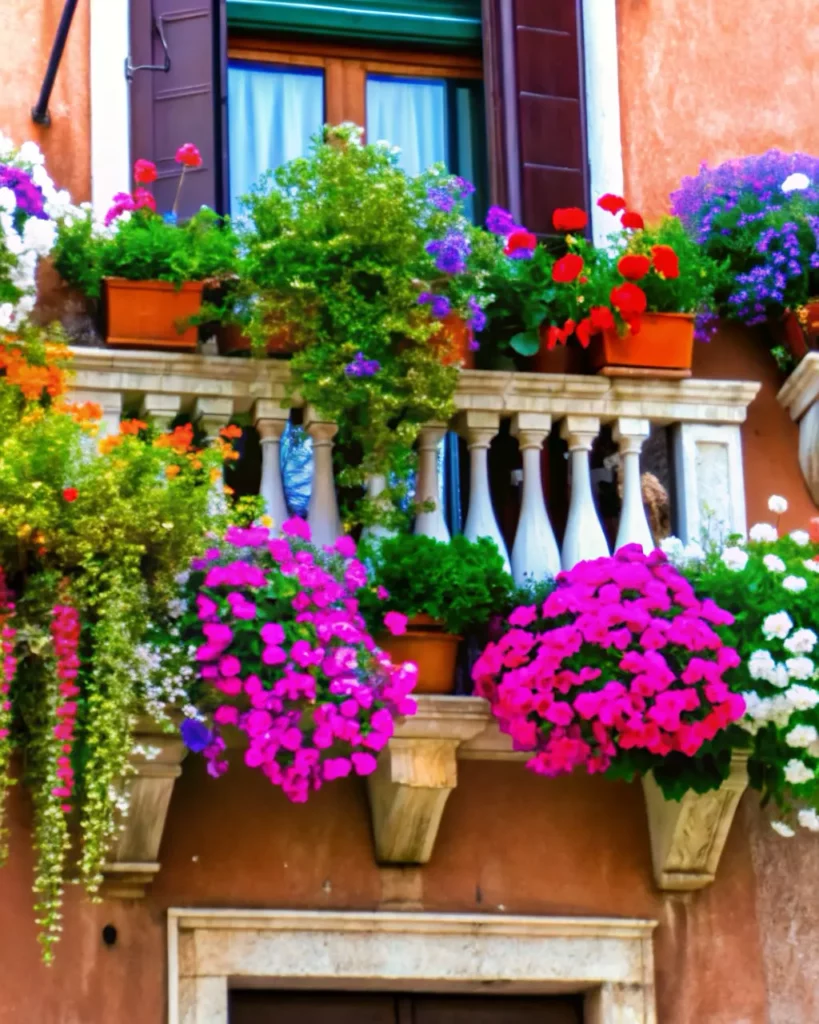
Container Care: Soil, Drainage, and Nutrition
Soil selection for container plants differs significantly from garden soil requirements. Commercial potting mixes provide appropriate drainage, aeration, and nutrition for container culture, while garden soil typically becomes too dense and poorly draining when used in containers.
Drainage enhancement prevents waterlogging and root rot in container plants. Adding perlite, coarse sand, or small gravel to potting mixes improves drainage, while ensuring adequate drainage holes in containers prevents water accumulation.
Fertilization requirements for container plants exceed those of garden plants due to frequent watering that leaches nutrients from potting mixes. Regular applications of balanced, slow-release fertilizers provide consistent nutrition, while occasional liquid fertilizer applications can address specific needs during peak growing periods.
Watering management requires understanding the unique needs of container culture. Containers dry out more quickly than garden soil, particularly in hot, windy conditions common on balconies and patios. Consistent moisture levels prevent stress while avoiding waterlogged conditions that damage roots.
Winter Protection Strategies
Winter protection extends the life of container plants and preserves container investments through cold seasons. Moving containers to protected locations provides the simplest protection method for mobile displays, while permanent installations require other protection strategies.
Insulation techniques protect both plants and containers from freezing damage. Wrapping containers with bubble wrap, burlap, or specialized plant covers prevents freeze damage to container walls and plant roots. Grouping containers together provides mutual protection and makes covering easier.
Plant selection for winter interest includes species that maintain attractive appearance through cold months. Evergreen plants, ornamental grasses, and plants with persistent fruit or seed heads provide winter structure and interest in container displays.
Watering adjustments during winter prevent both drought stress and freeze damage in container plants. Reducing watering frequency while ensuring plants don’t completely dry out maintains health without creating conditions that promote freeze damage.
Ideas for Rotating Seasonal Companions
Seasonal rotation strategies maximize the appeal of year-round container displays by incorporating plants that provide peak interest during different seasons. This approach creates dynamic displays that evolve throughout the year while maintaining core plants that provide consistent structure.
Spring additions like bulbs, cool-season annuals, and emerging perennials provide early season color and interest. These plants can be added to existing containers or incorporated into new displays that replace winter arrangements.
Summer intensification involves adding heat-tolerant plants that provide peak season color and interest. This is often when container displays reach their maximum impact, with full growth and abundant flowering from established plants.
Fall transitions include adding plants with autumn interest like ornamental peppers, chrysanthemums, or plants with attractive seed heads. This approach extends container appeal into late season while preparing for winter displays.
Winter arrangements focus on plants and materials that maintain interest during dormant seasons. Evergreen branches, berries, ornamental grasses, and winter-flowering plants create displays that remain attractive through cold months.
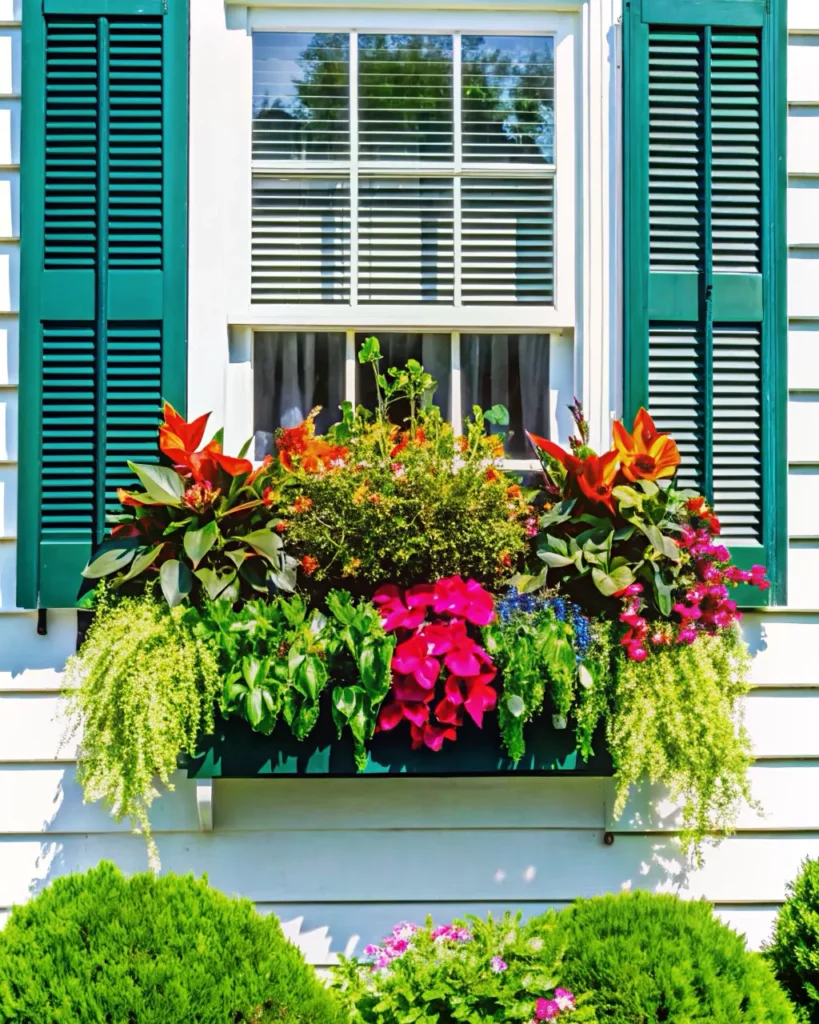
Troubleshooting Common Container Issues
Watering problems represent the most common issues in container gardening. Both overwatering and underwatering can quickly damage container plants, so understanding proper watering techniques and recognizing symptoms of water stress helps prevent serious problems.
Nutrient deficiencies develop more quickly in container plants due to frequent watering that leaches fertilizers from potting mixes. Regular fertilization and recognition of nutrient deficiency symptoms helps maintain healthy, attractive container displays.
Pest management in containers requires different approaches than garden pest control. The confined space can concentrate pest problems, but it also makes treatment easier and more targeted. Regular monitoring and early intervention prevent serious pest issues.
Root binding occurs when plants outgrow their containers, leading to circular root growth and declining plant performance. Regular repotting or root pruning maintains plant health

